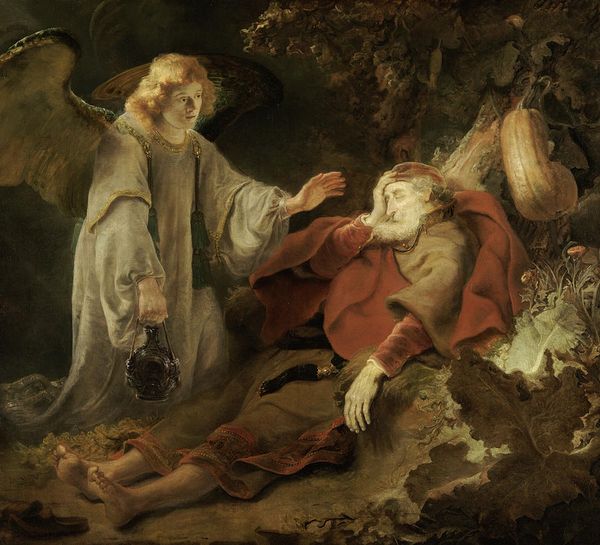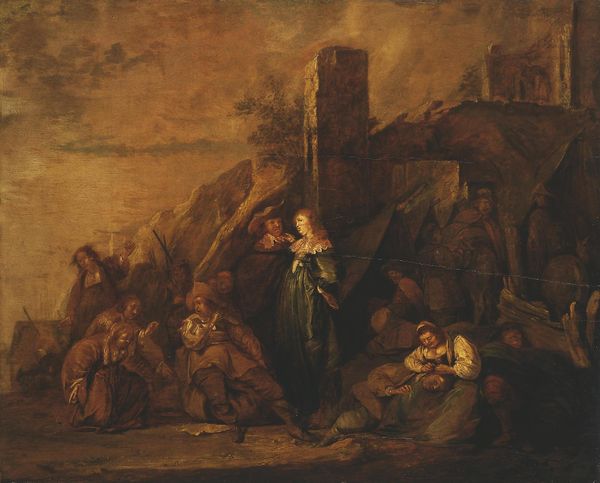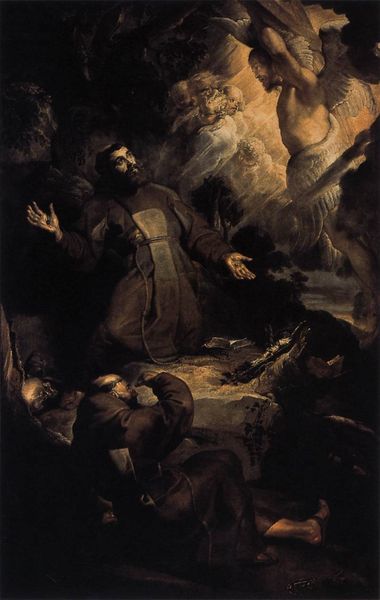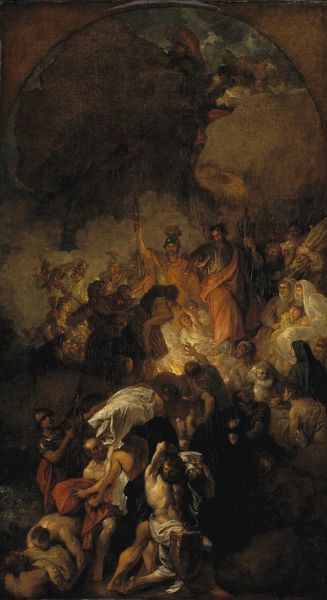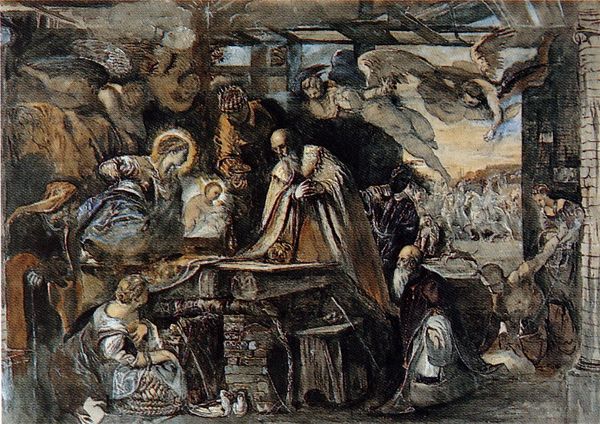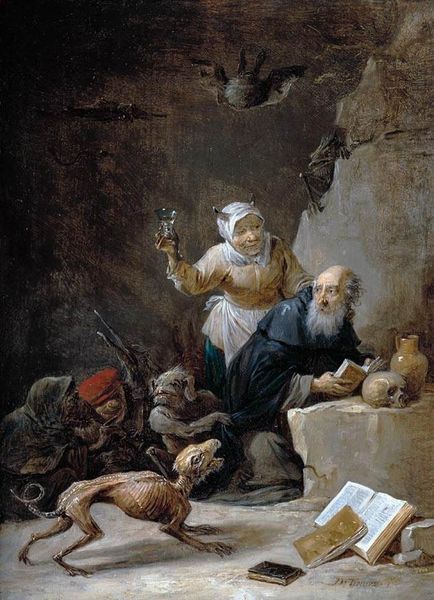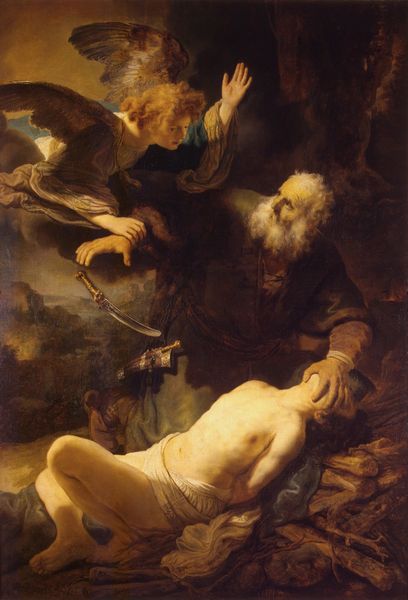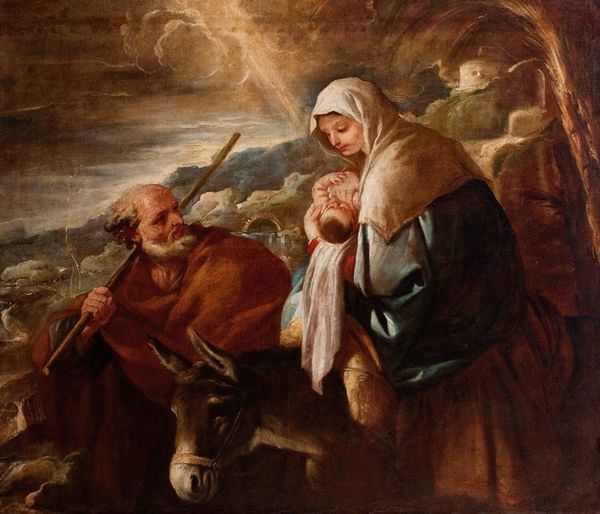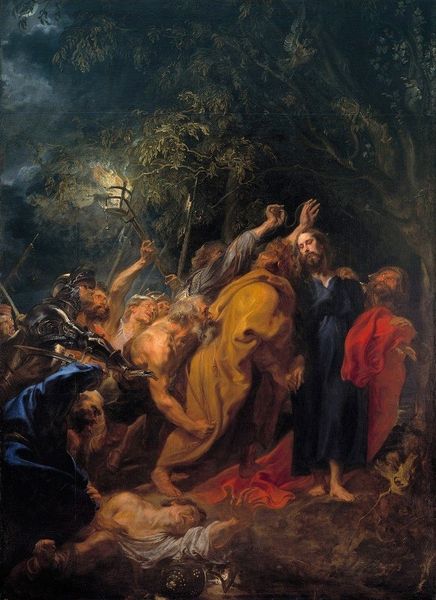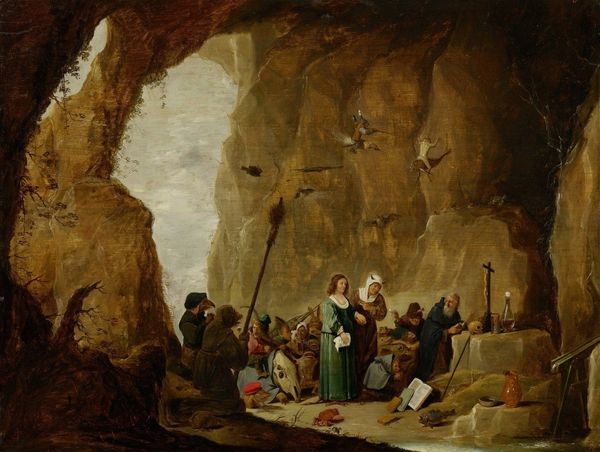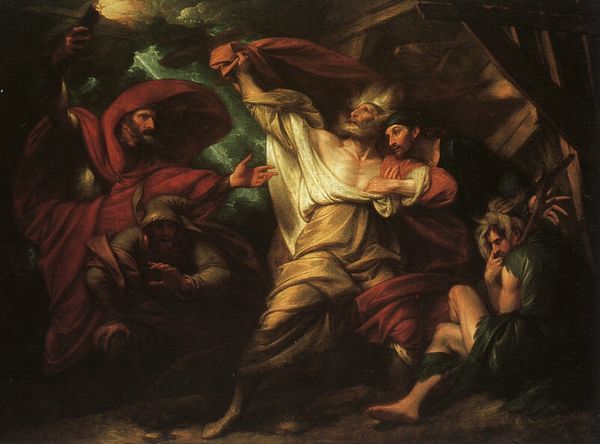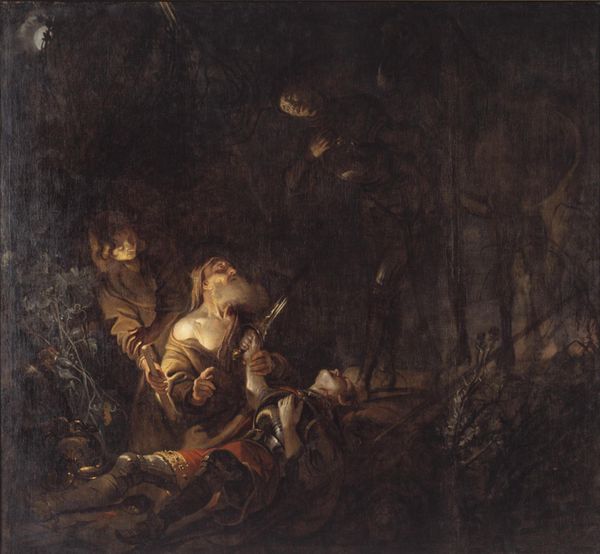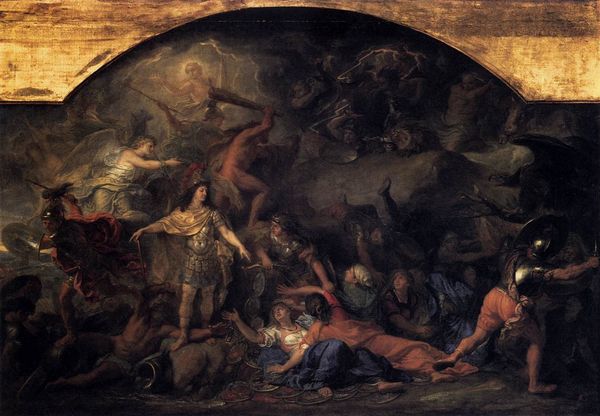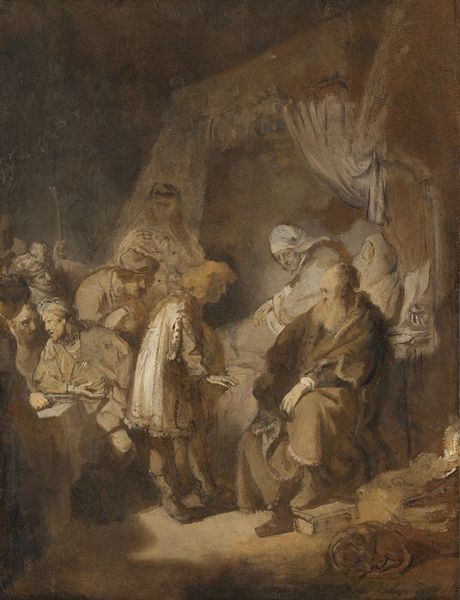
Temptation of St. Anthony
0:00
0:00
davidtenierstheyounger
Museum Mayer van den Bergh, Antwerp, Belgium
painting, oil-paint
#
allegory
#
narrative-art
#
baroque
#
painting
#
oil-paint
#
fantasy-art
#
figuration
#
oil painting
#
christianity
#
painting painterly
#
genre-painting
#
charcoal
Dimensions: 36.6 x 26.4 cm
Copyright: Public domain
Curator: David Teniers the Younger created this oil painting titled "Temptation of St. Anthony," and it currently resides at the Museum Mayer van den Bergh in Antwerp. Editor: My initial impression? Chaos. A sort of dimly lit pandemonium populated by the grotesque. Curator: It is certainly that. The painting portrays St. Anthony amidst a horde of fantastical creatures, demons and beasts, intended to test his faith. Given the context of genre painting in the Baroque era, such works provided commentary on societal anxieties related to sin and morality, often through humor and satire. Editor: Exactly. It strikes me how often depictions of St. Anthony serve as projections of societal fears surrounding female sexuality, anxieties that he actively resists. What does this tell us about power, desire, and resistance within 17th-century Flemish culture? Curator: Well, the institutional history shows the Catholic Church was a very powerful entity and obviously it did exert considerable influence. That tension plays out visually; the grotesque figures are intentionally theatrical, even comedic, serving as a form of visual rhetoric, reinforcing acceptable behaviour. Editor: Interesting point. Are these temptations individualized? Does each demon target a specific vulnerability or does their collective onslaught represent an overarching struggle between good and evil within Anthony himself? The work also evokes conversations within feminist and postcolonial discourse – questioning power structures – while centering on a heteronormative, masculine lens, doesn't it? Curator: Undoubtedly. Considering this artwork in its historical context invites a complex reading, reflecting the socio-political anxieties. In essence, it acts as both moralizing instruction and an acknowledgement of the human struggle against temptation. Editor: Seeing it through that lens highlights the historical perspective about power dynamics and its portrayal in art and public spaces, even those considered allegorical or entertaining. Curator: Indeed, there are definitely layers upon layers there to examine, and this Baroque interpretation, in the end, shows it perfectly.
Comments
No comments
Be the first to comment and join the conversation on the ultimate creative platform.
